How much can we plant in a week? Historical planting progress (1990-2018)
Author
Published
4/23/2019
Spring weather conditions often allow only a small window with ideal planting conditions, but when that window is open, Iowa farmers respond. For example, in 1992 64% of the Iowa corn crop was planted in one week. Again in 2011, corn planting progress completed during one week exceeded 60%. During 15 out of the last 29 years, 40% or more of the Iowa corn crop has been planted in one week’s time. Note that in all of the years shown, the largest weeks for planting progress over time have consistently occurred at the very end of April or in early May and averaged about 41%.
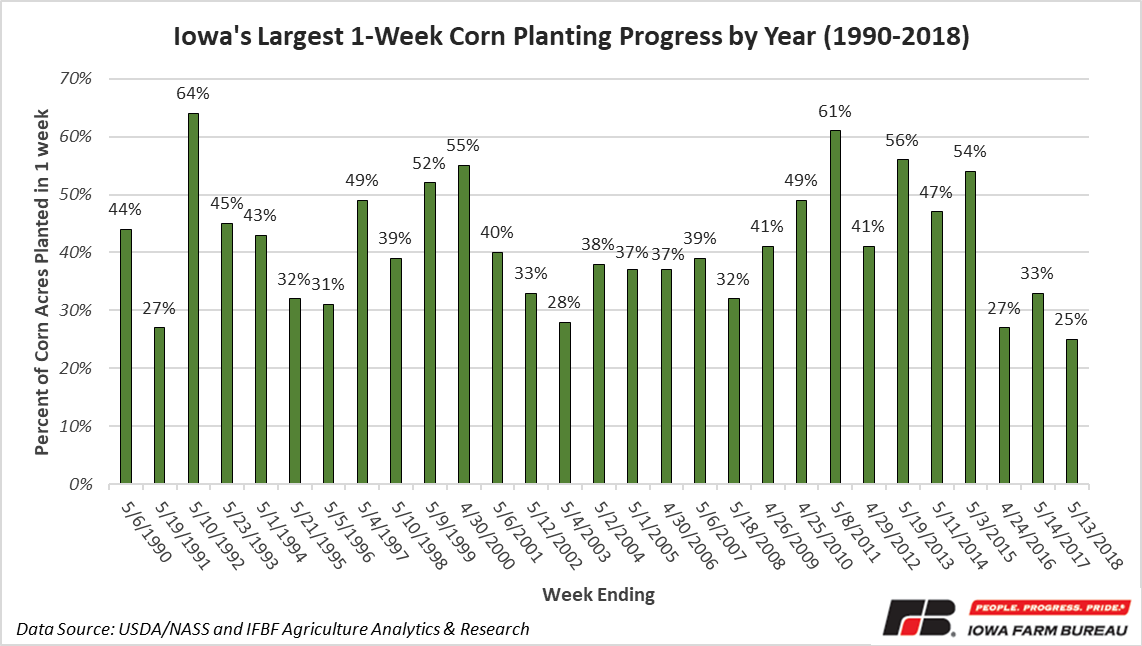
On a national level, the two highest years for corn planting progress completed in one week were 1992 and 2013 at 43%.
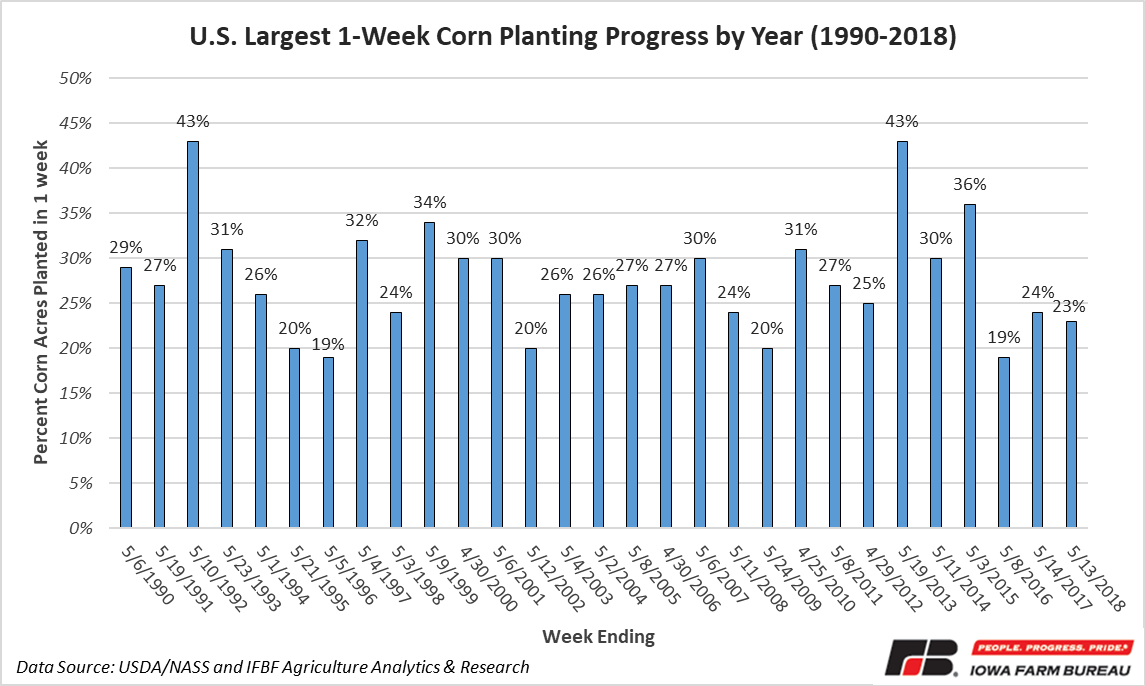
The weeks with the highest average corn planting progress from 1990 to 2018 in Iowa are Week #18 and Week #19 (early to mid-May) with about 27% and 21%, on average, planted during each of those weeks.
On a national level, Corn Belt states such as Iowa and Illinois are able to plant a significant amount of the corn crop during late April and early May, while extended states such as the Dakotas wait until later due to frost, so they plant more in late May and June.
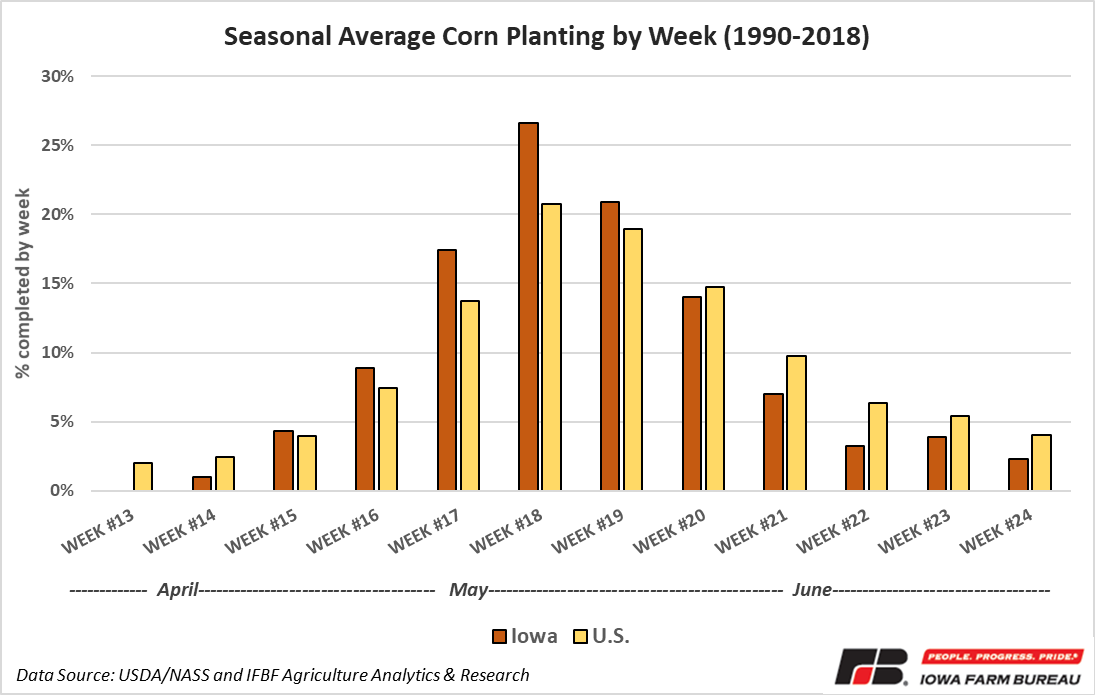
When looking at historical soybean planting progress, Iowa planted 48% of their soybean acres within a week in 1998. Seven out of the last 29 years each had more than 40% of soybean acres planted within a week timeframe. The average percent planted over this period during these high weeks was 35%.
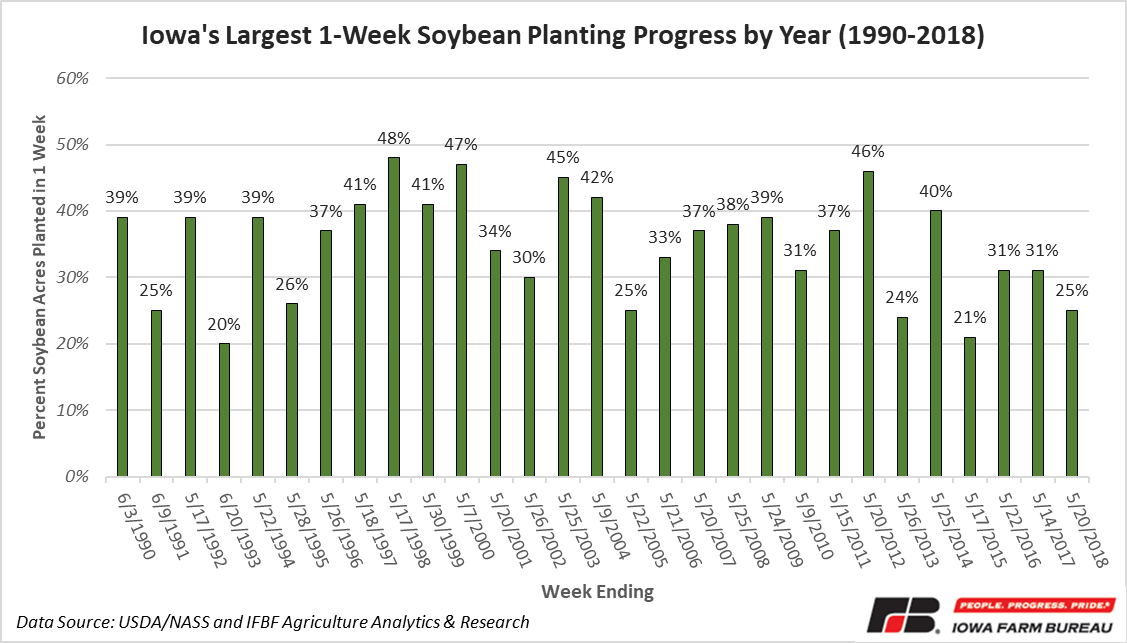
Overall, soybean planting progress tends to be smoother from week to week compared to the larger spikes in corn planting progress. It is more common to see several weeks in a row each year with 15-30% of soybean planting progress occurring.
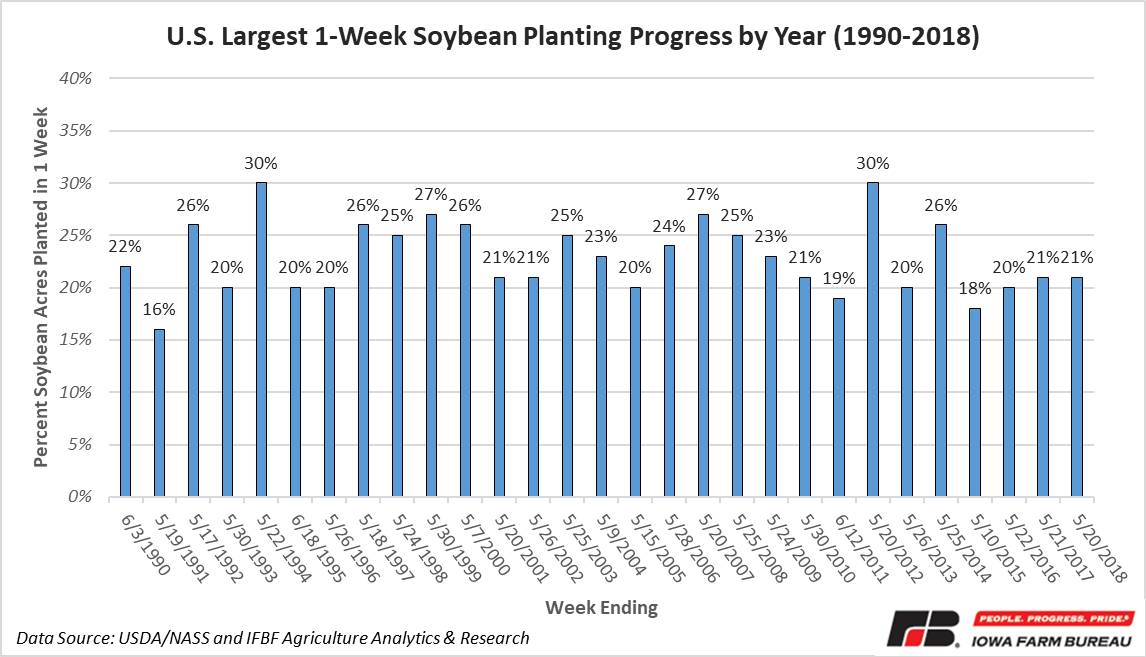
The week with the highest average soybean planting progress from 1990 to 2018 in Iowa typically occurs during Week #20 (late May) with 25% planted on average. The average soybean planting progress by week in Iowa is typically higher than the U.S. average during May, while states in different climatic zones plant earlier than Iowa, and extended states such as the Dakotas have to wait longer for soils to warm up and plant later in the season than Iowa.
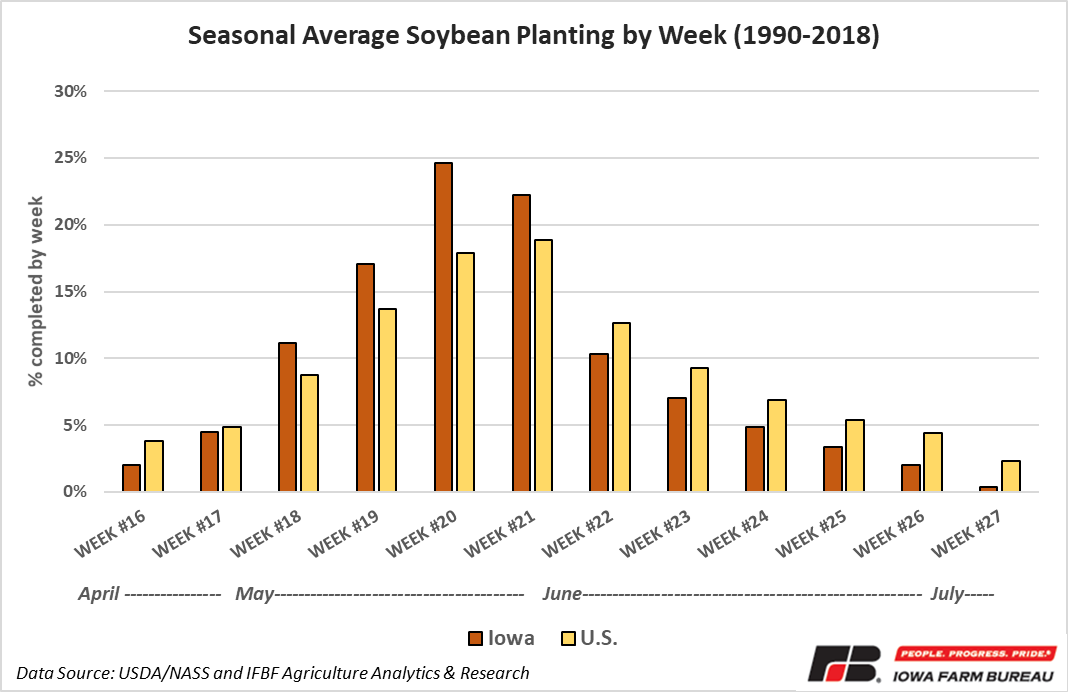
This information can be used when considering the necessary machinery capacity for your farm. Here are a few items to consider:
- Is your farm equipped to plant in a short timeframe due to weather and planting conditions?
- Are you overpaying for additional machinery capacity that is not necessary most years?
- Is your operation under-equipped, causing you to miss ideal planting conditions for much of your crop?
While late planting is only one of many factors in final corn yields, there is an economic risk tied to it. According to the Iowa State University’s Delayed Planting Evaluator, expected corn yield and returns typically begin to decline when the planting date is around the first week of June. Nitrogen management and application timing is one way to help reduce the risk of delayed planting.
With many farm acres that were under water from the March 2019 flooding along the Missouri River, extra time and resources will be needed to clear those acres before planting. The risk of additional flooding over the next few months could impact many of those same areas.
Michelle Mensing, Research Analyst, Decision Innovation Solutions (DIS). DIS is an Iowa-based economic research firm which provides regular farm economic research for the Iowa Farm Bureau Federation.
Want more news on this topic? Farm Bureau members may subscribe for a free email news service, featuring the farm and rural topics that interest them most!